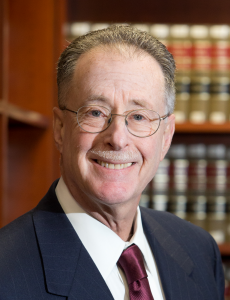Hurst v. Florida, 577 U.S. ___ (2016) (Sotomayor, J.).
Response by Professor Robin Maher
Geo. Wash. L. Rev. Docket (Oct. Term 2015)
Slip Opinion | New York Times | SCOTUSblog
In the recent capital trial of James Holmes, convicted of killing twelve and wounding seventy others in a movie theater, much attention was paid to the fact that one juror’s unshakable opposition resulted in a sentence of life without the possibility of parole despite at least nine other solid votes for death.1 But that was in Colorado, and Mr. Hurst had the misfortune of being tried in Florida, where jury unanimity is not required. Under Florida law, a jury’s sentencing decision must reach only a simple majority. This legal oddity sets Florida apart from nearly every other state with an active death penalty. But of apparently greater concern to the United States Supreme Court was another aspect of the State’s sentencing procedure: a Florida jury is told that its life-and-death decision is merely “advisory,” and that it is the judge who makes the final sentencing determination. In this respect, Florida’s law is similar to procedures in Alabama and Delaware, which also reserve the final sentencing decision to judges.
But Florida’s law goes even further than those in Alabama and Delaware, requiring the judge to make her own findings as to the existence of aggravating circumstances that make the crime death-eligible before imposing a sentence of her determination.
This is where Florida law fatally collided with the Court’s opinion in Ring v. Arizona,2 which held that juries, not judges, must make factual determinations of death eligibility. In Hurst v. Florida,3 the Court, in a rare, lopsided (especially for death penalty cases) 8-1 decision, struck down Florida’s sentencing scheme. Justice Sonia Sotomayor, writing for the majority, dismissed a “bevy of arguments” from Florida in a brisk, ten-page opinion. “The Sixth Amendment protects a defendant’s right to an impartial jury,” she wrote. “This right required Florida to base Timothy Hurst’s death sentence on a jury’s verdict, not a judge’s factfinding.”4 Justice Samuel Alito, who was not on the Court when Ring was decided, was the lone dissenter.
The result was largely expected by Court watchers and tealeaf readers after oral arguments in October. But the decision raises many more questions than it answers.
Florida has the second largest death row after California, but has executed many more people, including an execution in the first week of 2016. Two more executions have been scheduled by Governor Rick Scott in the coming weeks: Michael Lambrix on February 11th and Mark Assay on March 17th. In the wake of the Hurst decision, lawyers for Mr. Lambrix were given just 48 hours by the Florida Supreme Court to brief whether Hurst is applicable to his case, a clear signal that Florida will resist any attempt to slow the pace of its executions. On January 15th, the Florida Supreme Court unanimously denied Mr. Lambrix’s request for a stay of execution and set oral arguments on whether Hurst applies retroactively for February 2nd. The State’s lawyers have already taken the position that retroactive application would have a “severe and unsettling impact” on Florida’s justice system. Barring any surprises, the United States Supreme Court will have to grant stays of execution if Hurst and its implications are to be examined in a deliberative and thoughtful manner before executions resume.
Whether Hurst will have retroactive application is the biggest question for death row prisoners who were sentenced under procedures now held unconstitutional. Florida is not the only state that will be closely examining this issue. Delaware and Alabama statutes are also implicated, so new legal challenges from prisoners in those states can be expected.
The Florida Supreme Court will make the initial retroactivity determination based on state law, but its decision will undoubtedly be the subject of future litigation involving both state and federal law. Meanwhile, the Florida state legislature, which is currently in session, is expected to quickly take up new legislation intended to “fix” the statute, as many states did in the wake of Ring.5 The question may ultimately end up back at the U.S. Supreme Court again, as occurred after Ring.6
One question, long overdue, is whether non-unanimous verdicts in sentencing are constitutional. The question was briefed and argued in Hurst, but the Court avoided answering it, without explanation. A related question is whether so-called judicial override, where the judge is free to impose a different sentence than the jury, can now survive constitutional scrutiny. This last question implicates the same three states potentially affected by the Hurst decision: Florida, Alabama, and Delaware. Justice Sotomayor has indicated a special interest in this question, strongly suggesting in a 2013 dissent joined by Justice Stephen Breyer that it was time for the Court to reexamine a system that permitted “a single trial judge’s view to displace that of a jury representing a cross section of the community.”7
Finally, the outcome even for Mr. Hurst is in question. Despite finding that he was unconstitutionally sentenced to death, the Court did not grant Mr. Hurst a new sentencing hearing. Instead, it sent his case back to the state appellate court for a determination whether the constitutional error was “harmless.” This was a conclusion Justice Alito reached without difficulty in his dissenting opinion, writing “it defies belief to suggest that the jury would not have found the existence of either aggravating factor if its finding was binding.”8
There is cause for pessimism. “Harmless error,” an almost ubiquitous feature of death penalty appeals, is the abyss into which many otherwise meritorious claims fall. It is an enduring source of frustration for death penalty defense lawyers, who note that “harmless error” can be used to justify nearly any defect that is not structural, no matter how material. Justice Alito gave an explicit nod to the oft-cited policy goals of achieving “finality” in death penalty cases when he wrote that “In the interest of bringing this protracted litigation to a close, I would rule on the issue of harmless error. . . .”9 But no benefit obtained from achieving “finality” in litigation should ever trump the greater goal of ensuring justice, particularly in a death penalty case when the “finality” and irreversibility of an execution should be primary among considerations.
A finding of harmlessness should also be more difficult when it implicates the sentencing decisions of jurors, where each juror must apply her own sense of morality as she grapples with agonizing questions of mercy and punishment. How can appellate judges know with certainty what would have swayed the decision of an individual juror? Had the jury been instructed that they were solely and personally responsible for deciding whether the defendant lived or died — might they have gone a different way in Mr. Hurst’s case?
Hurst is the latest in a line of cases that began with Apprendi v. New Jersey10 to correctly reinforce the constitutional importance of the jury’s role in criminal cases. But unless Mr. Hurst and others like him receive new sentencing hearings, it is likely that the constitutional right so clearly articulated again in Hurst will sink without a trace beneath the doctrines of non-retroactivity and harmless error.
1. Jack Healy, Life Sentence for James Holmes, Aurora Theater Gunman, N.Y. Times, Aug. 7, 2015, http://www.nytimes.com/2015/08/08/us/jury-decides-fate-of-james-holmes-aurora-theater-gunman.html.
2. Ring v. Arizona, 536 U.S. 584 (2002).
3. Hurst v. Florida, No. 14-7505, slip op. (U.S. Jan. 12, 2016).
4. Hurst, slip op. at 10 (majority opinion).
5. Michael Auslen, Florida Legislators Will Tackle Death Penalty After U.S. Supreme Court Decision, Miami Herald, Jan. 12, 2016, http://www.miamiherald.com/news/politics-government/state-politics/article54278830.html.
6. Schriro v. Summerlin, 542 U.S. 348 (2004) (holding that Ring was not retroactive).
7. Woodward v. Alabama, 123 So. 3d 989 (Ala. Crim. App. 2012), cert. denied 134 S.Ct. 405, 409 (U.S. Nov. 18, 2013) (No. 13-5380) (Sotomayor, J., dissenting).
8. Hurst, slip op. at 5 (Alito, J., dissenting).
9. Id.
10. Apprendi v. New Jersey, 530 U.S. 466 (2000).
Recommended Citation
Robin Maher, Response, Hurst v. Florida, Geo. Wash. L. Rev. Docket (Jan. 17, 2016), http://www.gwlr.org/hurst-v-florida-how-much-does-the-sixth-amendment-really-protect.



